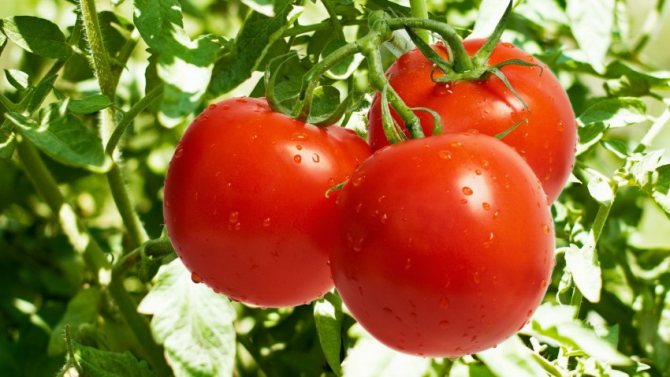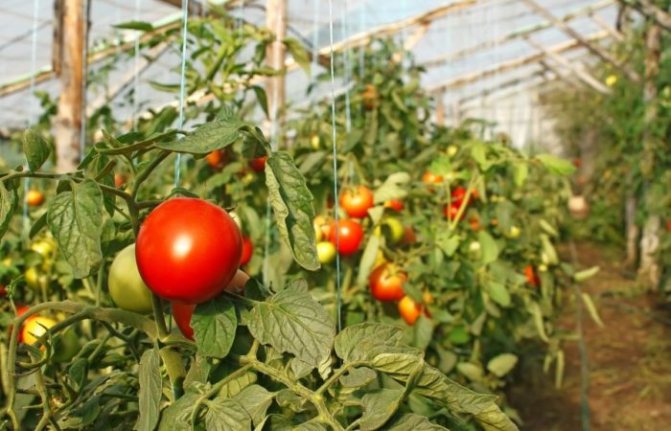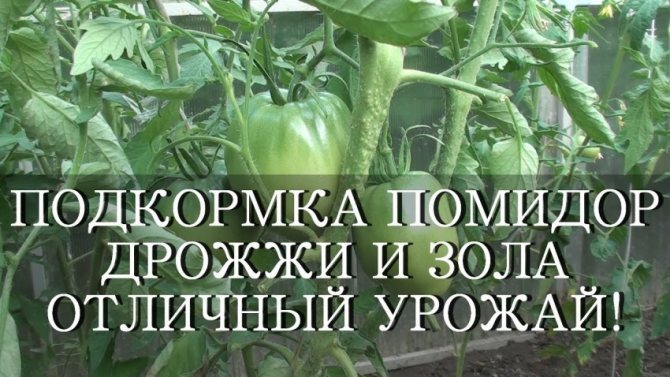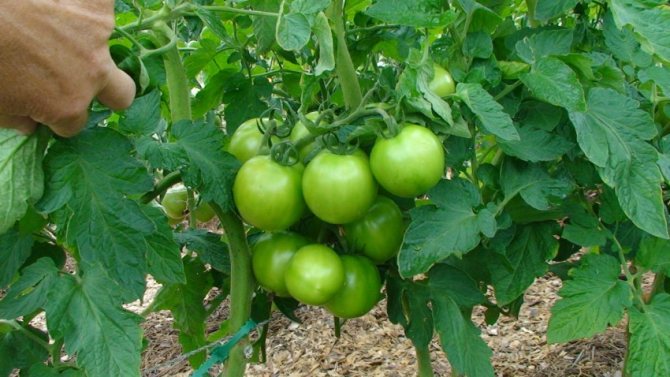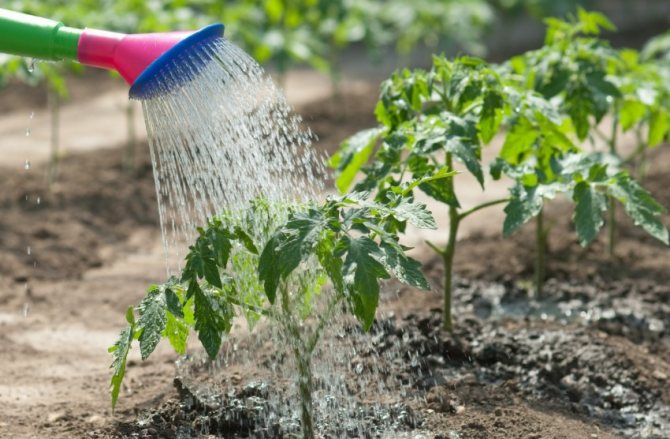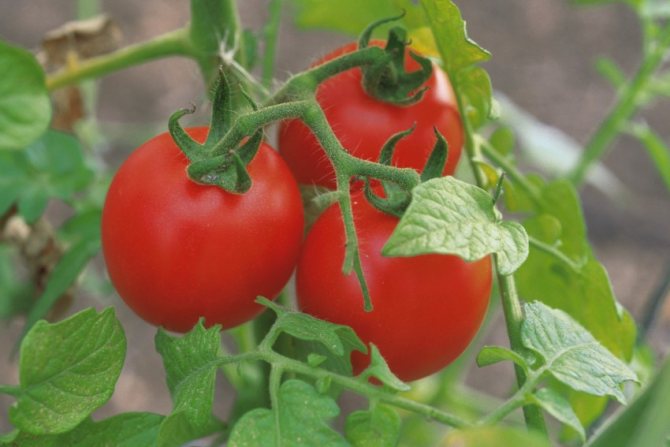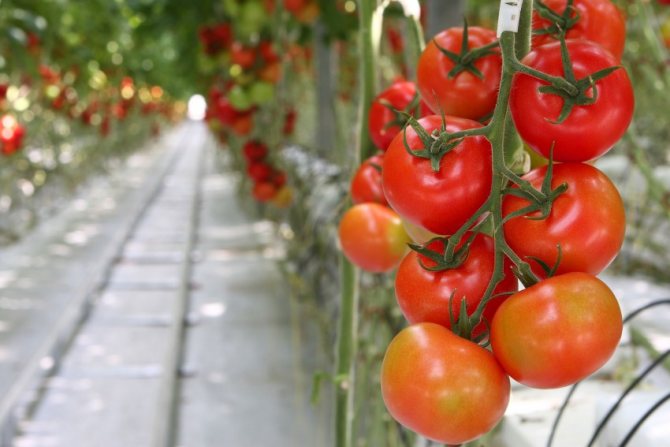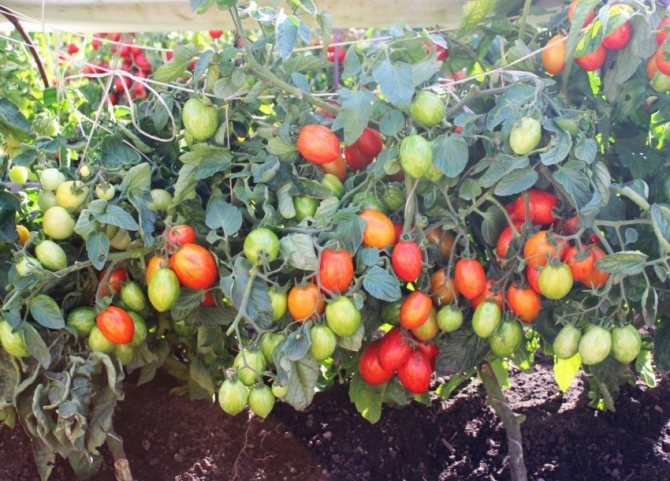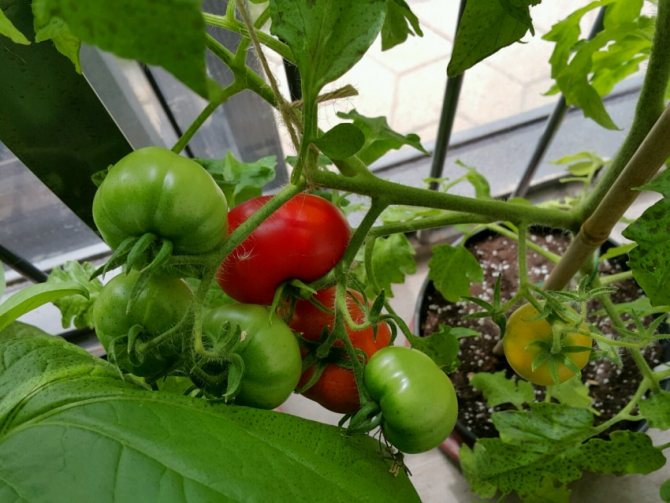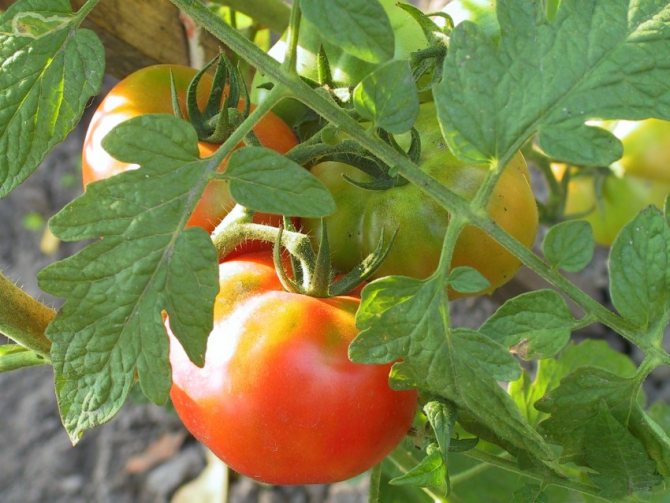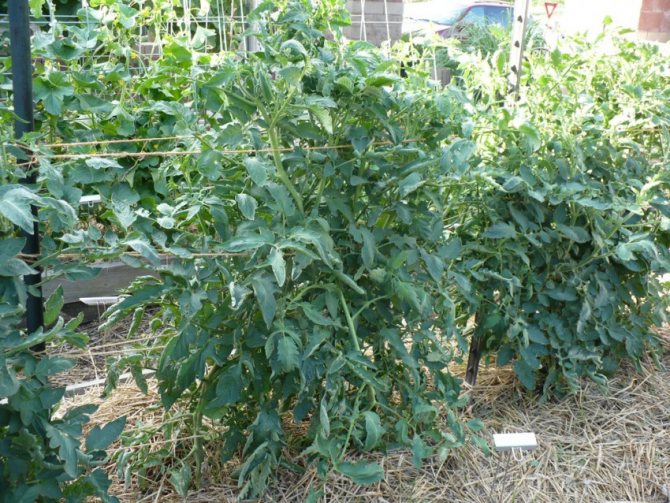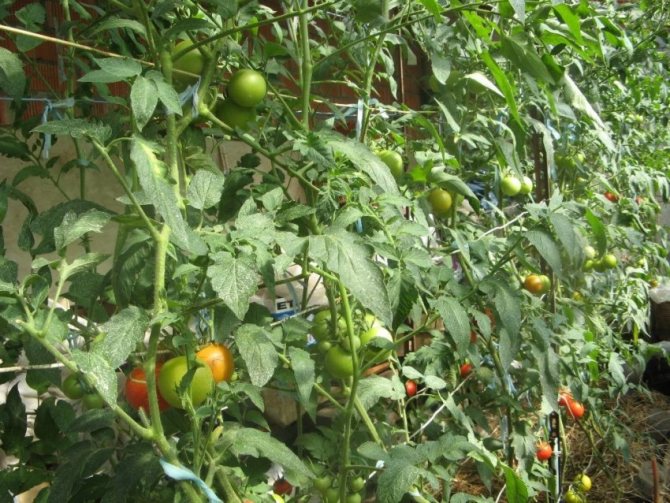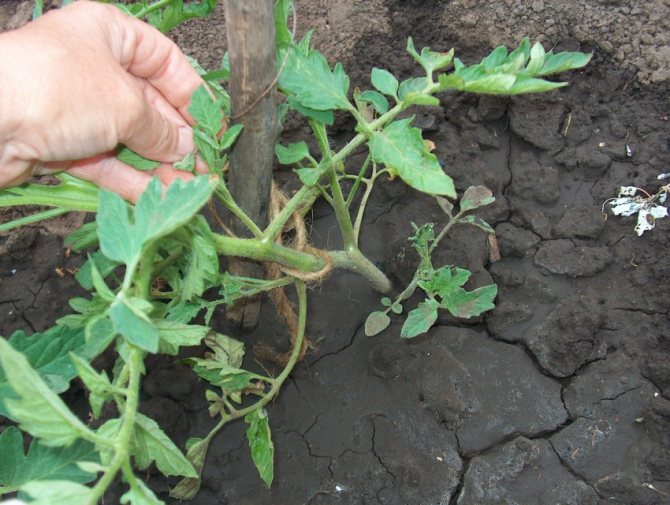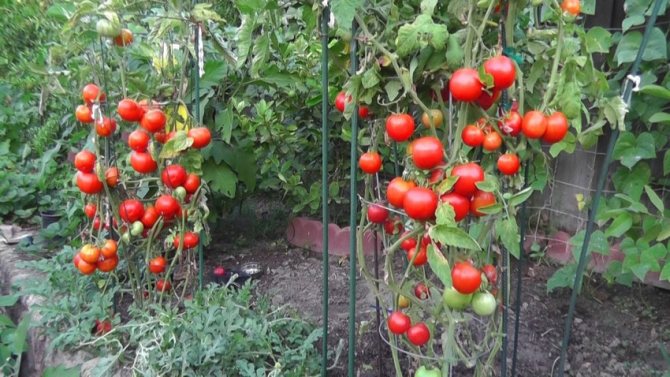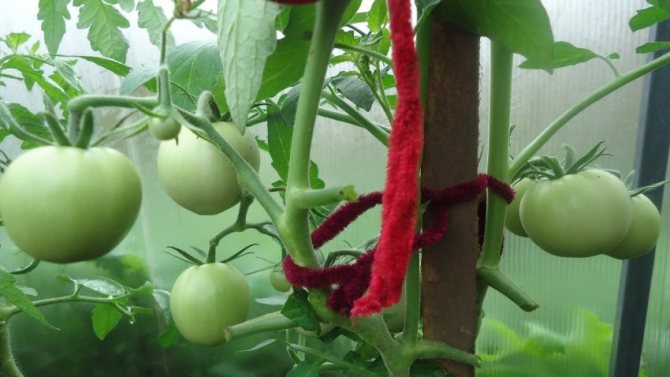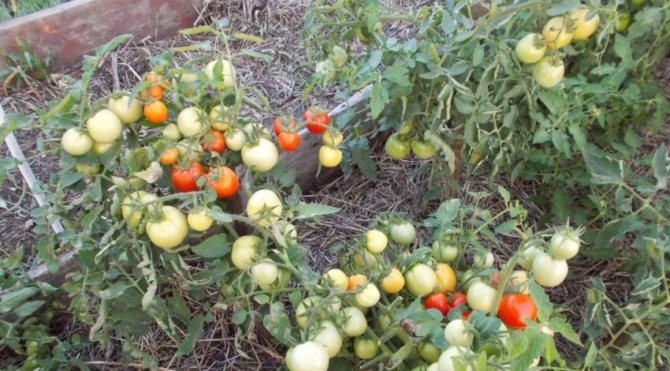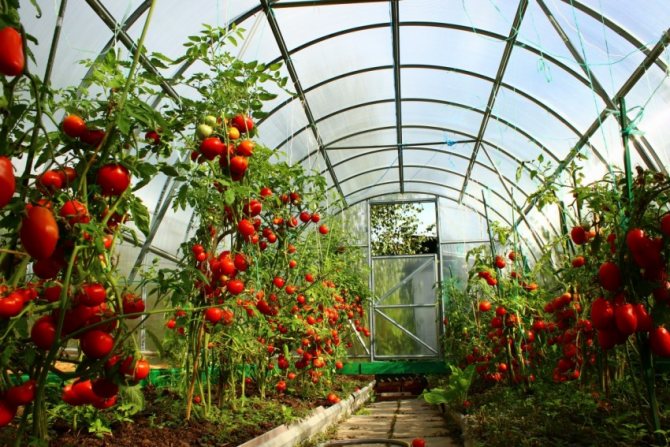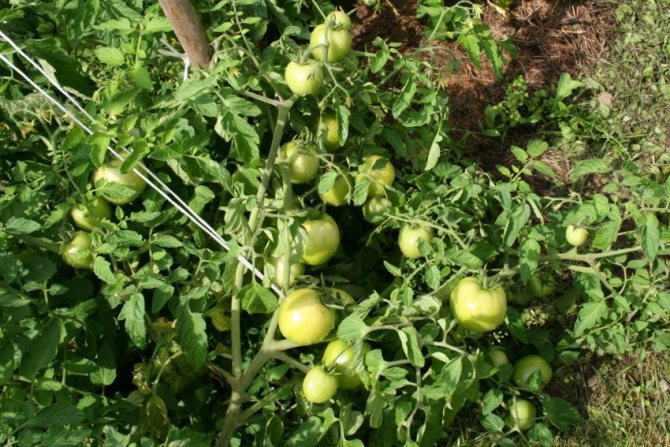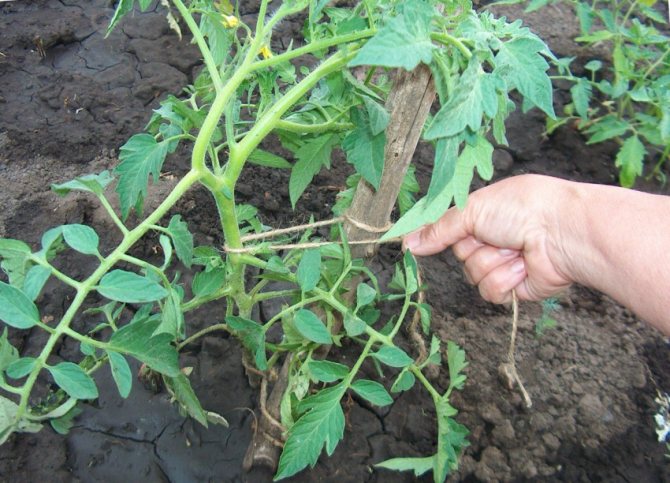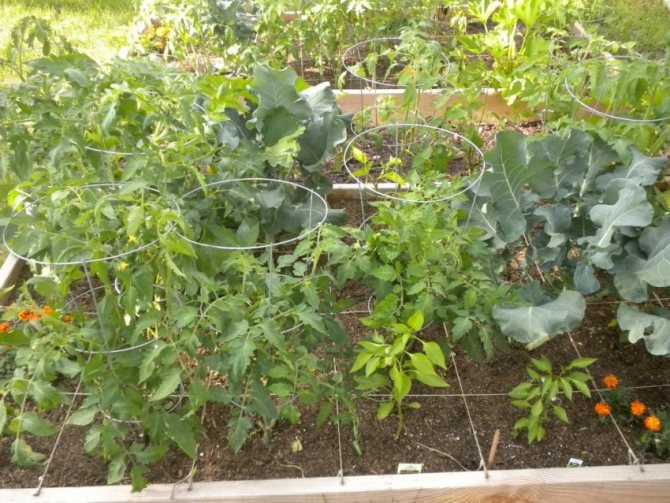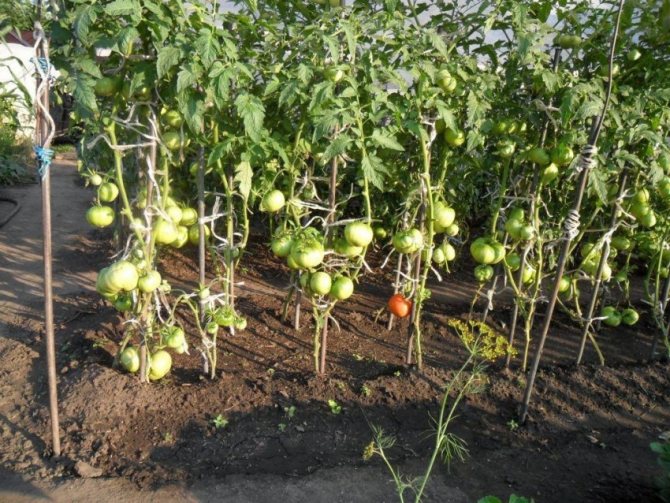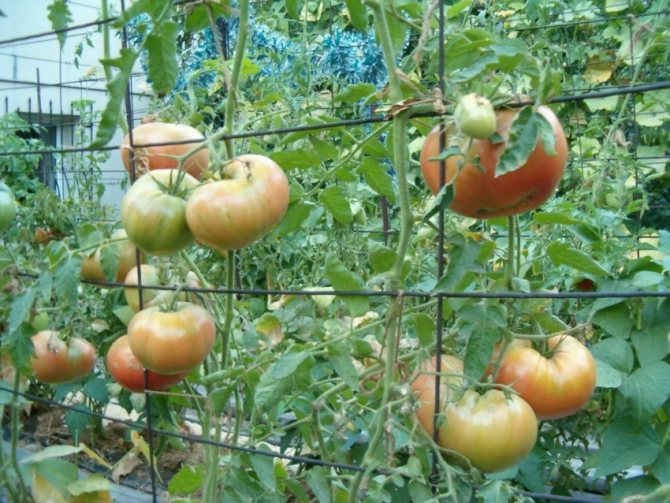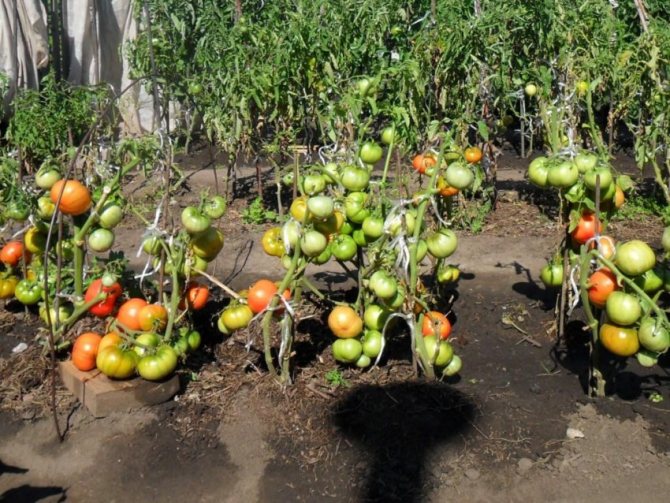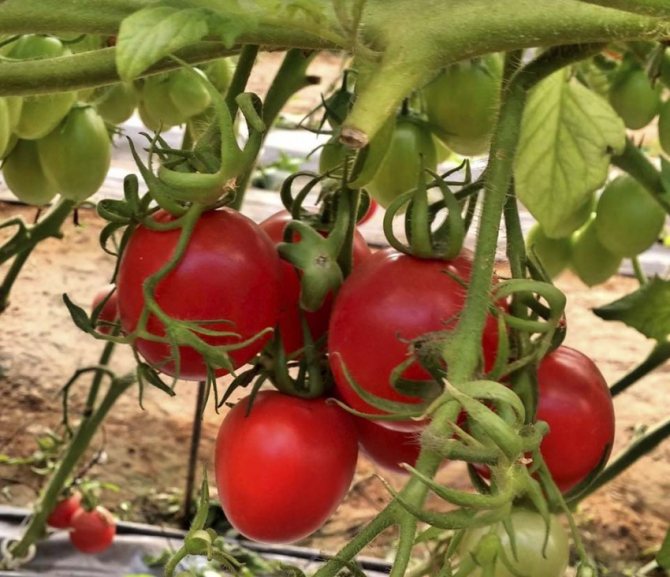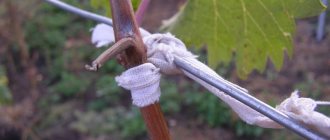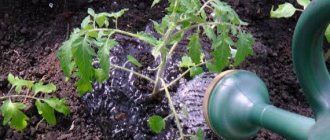Vegetable growers who grow tomatoes on their plots plant tomatoes of various varieties, both short and tall. But in any case, they make sure that the cultivation of this crop takes place according to the rules. One of them is tying bushes to supports. It is carried out with the aim of providing tomatoes with more comfortable living conditions and facilitating the work of the vegetable grower. Consider how to properly tie up tomatoes in open beds and in greenhouses, and in what ways this can be done.
Why do they do this?
No matter how strong the stem of this plant is, experienced gardeners still strongly recommend tying tomatoes. Almost all tomato varieties require such manipulations, and the garter is especially important for tall tomatoes, which often reach a height of 2 m.
As for the undersized tomato varieties, they do not need a garter, by and large. But gardeners use such varieties less and less, because everyone is trying to use the area of their site as efficiently as possible, and tall tomatoes are more profitable compared to low varieties.
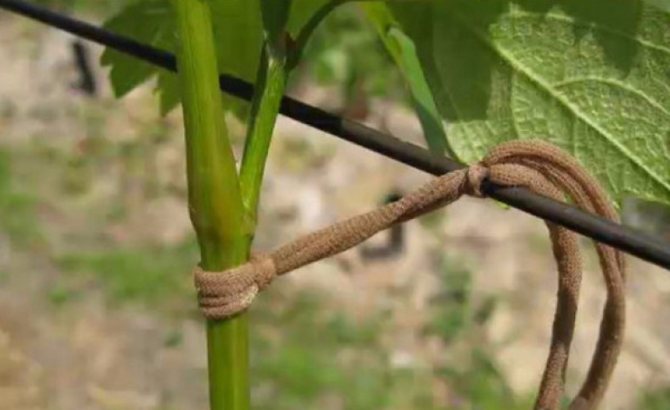
Tying tomatoes is an extremely important procedure. It has many useful functions:
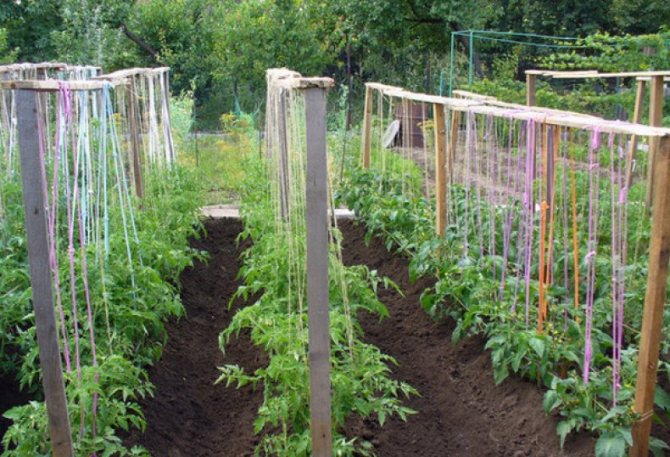

Based on all of the above, there should be no doubt about the need to garter tomatoes. It is recommended to build garters about 15–20 days after the seedlings are planted in the place of permanent growth. There are different ways to garter tomatoes planted in the open field. Next, we will consider the most common of them.
The development of truck farming does not stand still. Breeders regularly present new varieties of vegetable crops to the general attention. Also, farmers know many ways of tying tomatoes on the site. The effectiveness of many has been confirmed by practice, so that a novice gardener can choose practically any of them.
On pegs
The garter itself should be made as high as possible, while the tourniquet does not need to be tightened strongly, since the tomatoes can simply die. As the tomato crop grows, the garter can be gradually moved upward, or removed and tied back.
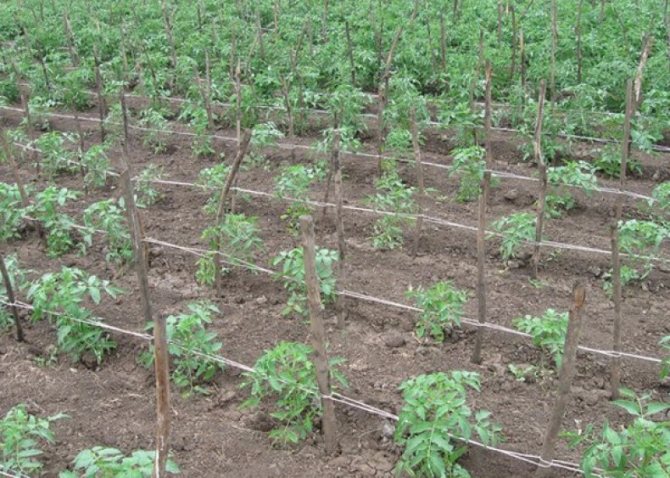

On the trellis
If a lot of tomatoes have been planted in the open field, then the pegging method can be inconvenient to use. It is better in this case to tie up the plants on a trellis.
You will need strong stakes and a thin long bar. The pegs will need to be driven in on different sides of the garden bed, and between the stakes, stretch and secure the wire. Plants should be tied directly to the wire. You can use this method in several variations:
Vegetable cages
Gardeners can also build cages for their tomatoes. Such designs will add up for more than one season. You will need to make cells separately for each tomato bush.
Using dense and stiff wire, you need to form several circles of the same size.Next, they should be fastened together, observing the distance, using a vertical stand, which can also be made of wire. The result should be some cylindrical cells. Such structures must be installed on the garden bed over the tomato bushes and, as the plant grows, make a garter.
If it is not possible to find the required wire density, then you can build a cage from wood. You can also make the structure wider, then it will be able to cover not one bush, but several at once. This device will be much more reliable than conventional pegs.
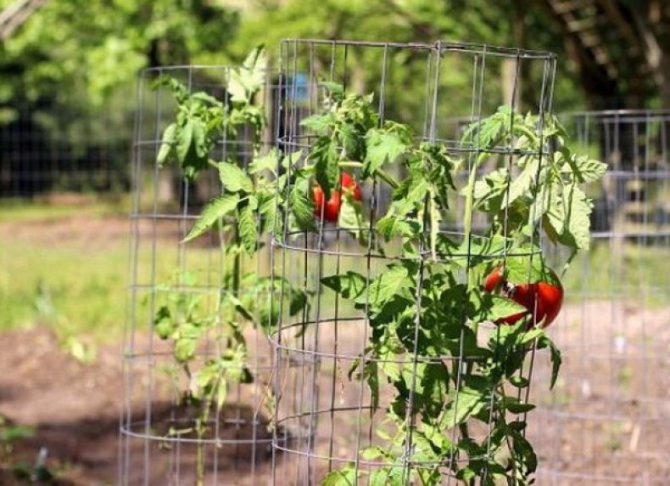

To carry out the garter of tomatoes planted in the open field, you can also use a kind of hoods. This method, by the way, is suitable for garter and other crops.
To make such a device, you will need vine branches or wire. You need to make a kind of pyramid with a base and cross-viscous in the shape of a cell. Such caps must be installed on the garden bed during planting of seedlings, at a distance of about 1 m from each other. If the site allows, then the distance can be even greater, this will avoid excessive crowding of tomatoes.
Warm beds for tomatoes
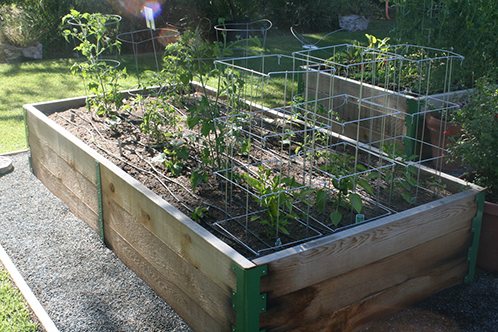

To build a warm bed, you need a box of boards to match the size of the bed. The height of such a bed is usually about 40-50 cm. Be sure to strengthen the walls of such a bed, otherwise it will fall apart when soil is laid in it. Foliage, branches, plant residues are laid at the bottom, compost on top and then soil from the garden.
Next, the bed must be spilled with water and covered with a dark film (well, or whatever you have). Before planting, remove the film and feel that the bed is warm.
And a warm bed becomes from the fact that all these organic residues begin to overheat and warm up the soil from below. From this plants grow faster in this garden.
Watering the plants in such a bed is only necessary with warm water.
Why tie up tomatoes?
Not all varieties of tomatoes are able to "keep themselves" in the process of growth and even more so the development of fruits. Under the mass of overflowing tomatoes, the bushes begin to slope to the ground and may even break. If the injury does not occur, then it is unlikely that the future harvest will benefit from lying on the ground - slugs and worms will gladly feast on an unexpected gift.
There is one more circumstance - tomatoes must be watered at the root, and when they are in a lying position, this cannot be done. It is undesirable to water the tomato tops, as well as pour water on the fruits lying on the ground. And in general, the path to the tops of the plant for any disease in this case is significantly reduced.
To avoid unpleasant moments that can negatively affect the final result of all your labors, tomatoes must be tied up. And now let's figure out exactly how.
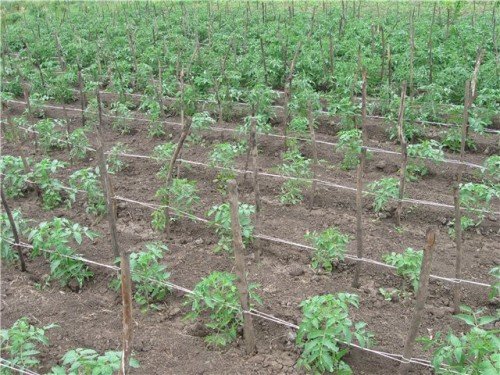

In conditions other than those in the southern latitudes, the garter of tomatoes becomes a necessity.
Watch the video
How to tie up tomatoes?
Tomatoes are one of the most demanding and capricious garden crops. Getting a good harvest of tomatoes in the Russian climate (except, of course, in the southern regions) is a very difficult task. An experienced gardener uses a lot of tricks when growing tomatoes - these are special fertilizers, and special rules for planting in the ground, and the organization of watering according to a strictly defined schedule and, of course, a garter.
Let's figure out how to tie up tomatoes correctly and why do it at all.
General rules
In different climatic conditions, things are different. For example, in the southern latitudes, where tomatoes are grown on large plantations in the rays of the bright sun, it is inappropriate to tie them up. The fruits lie on the ground, and the whole plant receives much more nutrients from the ground than in the case of a garter.
Residents of cooler regions are unlikely to think about such a method of growing. Periodic rains in combination with not the highest temperatures (especially at night) can ruin all the efforts of summer residents with the hands of phytophthora or some other misfortune like rot. That is why here you will definitely have to tie up tomato bushes, even undersized ones. It is necessary to completely exclude contact of the fruits with the ground.
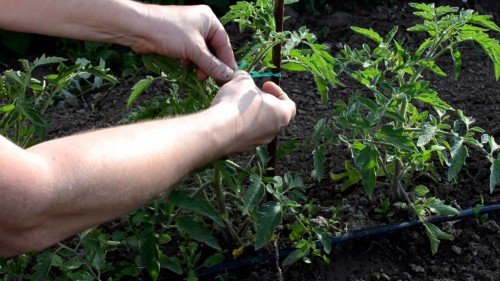

Thanks to the garter, fruit contact with the ground and rotting is excluded
Read also: How to grow Spasskaya Tower tomatoes in your home garden
An important condition is to exclude wires, fishing lines and thin ropes from the garters for tomato bushes. For this purpose, you need to use nylon tights and stockings. But this is the ideal. Various straps and powerful ropes are also suitable, if only the garter really strongly, but gently held the bush, without pinching the stem.
To avoid putting tomatoes at risk of contracting last year's diseases, do not use old garters.
The simplest known method is to tie it to a wooden or metal peg driven into the ground. For each bush, a peg is driven in next to it, and a variety of materials are used as the material for the garter - nylon stockings, cord from household appliances, ribbons and straps. The bush is tied up near the top of the stem.
The advantage of this method is that the garters can be used every year. The downside, as already mentioned, is the possible infection of plants with diseases that have remained on the garters from last year. But even here there is a way out - disinfection of all materials before new use.
An important point is not to overtighten the stem with garters, so as not to damage it and expose the plant to death. As the bush will grow further, it is necessary to equip it with new garters or raise the old one as it grows.
Let's complicate the garter a little by using trellises. We put them at some distance from each other and stretch a wire horizontally between them. We make a distance of 45 cm between the rows of wire. Actually, rows of bushes will be tied to these wires.
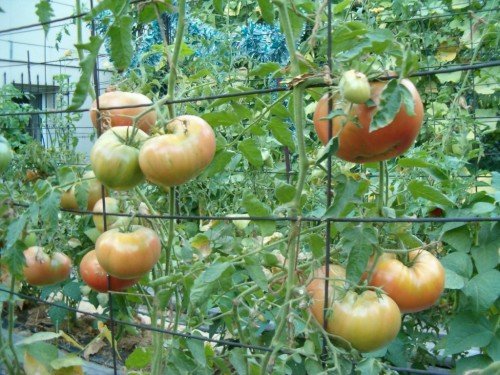

A metal mesh can serve as a good guide for tomato bushes, only its cells should be large
The third method is called linear. A wire is pulled in the middle between the stakes, then a rope is pulled to it over each tomato, one of its ends is attached to the stem of the bush.
The fourth way - we make its own cage for each bush. The cage is made of wire or metal. We bend the circles that will be connected with rods. We plant a tomato bush, add a cage to a depth of 15 cm and tie it with a rope.
The next method is to use pyramidal caps made of four rods each. Each cap accommodates four bushes and, when planting a plant, is dug in by 25 cm, and the tops of the twigs are connected with wire.
The sixth method involves the use of hooks and wire. On both sides of the tomato row, stakes are dug in, between which a cable is pulled. After 30 cm, a fishing line or twine is pulled from it, to which rings and hooks are attached. The stalks of the tomato bushes will catch on with the hooks.
Video: overview of tomato garter techniques
Photo gallery of ways
The correct garter of a tomato depends on how strong and weather-resistant they will grow. A competent garter is not a secondary occupation that can be neglected, but an important event that affects the quality of the future harvest.
General rules for garters
It is very important to choose the right material for tying tomato bushes. To prevent the garter material from cutting into the stems of the bushes, it is better to refuse thin wire and rope, from fishing line. Last year's fabric material, with which the bushes were tied up, should also not be used, so that the larvae of pests and pathogens of all kinds of infections, bacteria preserved in it, do not damage the current crop.
Natural fabrics are not very suitable for tying - they can rot, become a refuge for various pathogens, bacteria, and insect pests.
It is very good to use various synthetic materials: nylon cords, ropes, twines. It must be remembered that they must be thick and wide. You can also use garters for grapes, old tights, nylon knee-highs. Any garter material is only suitable for the season; other garters need to be prepared for the next.
Before tying, the material must be disinfected - washed, steamed or boiled.
With any garter method, no garter material should cut into the tomato stem. Therefore, you need to tie it up, leaving a small gap between the stem and the peg, given that the bush will still grow.
During the season, the bushes are usually tied up 2-4 times (depending on the height of the variety).
According to the Minyaeva method
There is a popular method that is based on a loose loop garter. Its author is Yulia Minyaeva. She focuses on the versatility of using her version. With the help of a free loop, you will not damage the stem and securely attach it to the support.
You can use ordinary fabric ropes or nylon tights. The use of metal wire makes it difficult to create a loop and leads to damage to the shoots.
The application of the free loop method is as follows:
- grab the bush with a cord, on which make a free knot;
- fasten the loop at the root system of the plant;
- grab tomato bushes that require a garter in a spiral manner;
- Attach the top of the rope to the support.
Garter methods
There are several ways to tie tomatoes in the open field:
It all depends on the height of the tomato variety, the preferences of the gardener, the possibilities of the site on which the tomatoes are planted. The support should be reliable, preferably soft, so that it does not damage the tomato stems. It is better to start building a device for tomatoes two to three weeks after the seedlings are planted in open ground.
The most popular way among summer residents, the simplest and most affordable are pegs. They can be wooden, plastic, metal (for example, rods, rods), from any auxiliary materials, of which there are many in the summer cottage (for example, different planks, wooden boards). Thick tree branches can be used. It must be remembered - do not tighten the binding loop tight and that the bush does not have excessive loads.
Read also: Bell peppers for the winter: how to pickle a vegetable
When installing the peg, it should be taken into account that the height of the support should be approximately the same as the height of the bush; for undersized and medium-sized ones, even a little higher - 15–25 cm higher than the plant. If the tomato is tall, stakes will be needed 2 or 2.5 m high, taking into account the depth of immersion of the stake in the soil - up to 2.8 m.The stake is driven in at a distance of 10 cm from the bush, very carefully so as not to damage the root system of the tomato, to a depth of about 20 cm ...
Wrap the garter loosely several times around the plant itself, then tie it. When the tomato grows up, you need to tie it up again, two or three (depending on the height of the variety).
Low and medium-sized varieties are best planted in open ground at a distance of 50–70 cm in a square-nesting way.
Two or three rows of wire must be pulled between the posts to tie the plant up several times as it grows. The trunk of the bush can also be passed through the taut wires like a braid. Do not tighten the garter tightly.Ripening fruits can also be tied to such supports, especially if they are very large, before they ripen, until the time comes to pluck them.
The spacing between the wires in a row should be from 70 to 100 cm. You can stretch the nylon threads across the stretched wires at a distance of about 25 cm so that a kind of mesh is obtained. This will ensure greater stability of the structure and the convenience of tying plants.
The first, lower wire is tied at a distance of about 25 cm from the ground. And the tops of the stakes-supports can be additionally fastened with wooden slats.
With any method, the bush begins to tie upwhen it grows to the bottom row of wire, and continue to fix (not tight!) it as it grows.
As a variant of the trellis method, there is also this: a wire is tied to the installed supports (only one row). From the planted tomatoes, a rope or twine is tied to the wire, to which the stem of the tomato will be fixed. The lower end of the rope is neatly and freely wrapped around the stem, tied. So, gradually the stem is simply wrapped around the twine.
Tomato cages
It makes sense to make cages if there are a lot of tomatoes, the bushes are grown on an almost industrial scale. Cages are generally good for tall, indeterminate varieties. For the construction of such structures, you need to work hard, but these structures will serve for more than one year. Cells are set for each bush its own.
Reinforcement bars are required to build cages. The rods are installed as racks, others, thinner, are wrapped around the vertical supports made. Rigid wire can be wrapped around the racks. It turns out a kind of cylinder; a tomato bush is later planted inside it.
You can build a cage out of wooden slats (if it is difficult to get the reinforcement). If such a structure is made wider and more spacious, it can serve as a support for 4 bushes: each bush rests on one of the racks of the cage. If you make a wooden cage like a gazebo, plant tomato bushes at each support, such designs will also look very beautiful, decorative, and aesthetically pleasing. When tomatoes grow, they really look like little gazebos, entwined with openwork greenery.
A tomato cap is very similar to a hut, a wigwam, a pyramid. Its basis is a vertical large stake in the center. Lighter three or four rods are attached to it., which are fixed at the top in a convenient way.
The twigs are interconnected by several rows of wire. Seedlings are planted inside such a hut. The stems of the grown plants are tied up on these wire tiers.
For the construction of such wigwams, you can use branches, vines, sticks, ropes, wire, stakes - in a word, everything that is at hand in your subsidiary farm. The distance between the huts is at least one meter from each other.
Unusual ways of tying
There are also non-standard facilities for tying tomatoes. The principle of the original methods is the support erected for the plant. The material used is the most unexpected, varied: cuttings of seedlings, plant or wood vines, blackberry stems, hazel, willow twigs, vines, twine.
The main thing is to choose the method that is more suitable in a particular case, as well as to apply it correctly.
Why is the tying procedure needed?
Despite the fact that the stems of plants can be strong, experienced summer residents still recommend tying shrubs. As a rule, many varieties of tomatoes need this procedure. An important point is the tying up of tall plants, which can reach a height of up to 2 m.
Emaciated Stepanenko: I weighed 108, and now 65. I drank warm at night. More details here.
If we are talking about low-growing varieties of tomatoes, then they do not need to be tied.However, such varieties are less often used by summer residents, since each gardener tries to rationally use the territory of the site. And tall crops allow you to save territory, as they take up less space.
Read also: How to fertilize eggplants: tips and tricks for feeding a vegetable
Tying tomatoes is an important agricultural procedure. Performs the following functions:
Based on the above arguments, we can conclude that tying bushes is a necessary and useful procedure. You need to start the process of tying plants 15-20 days after the seedlings are planted in a permanent place of growth. Read about how to tie tomatoes in a greenhouse in another article.
Tying methods
I was able to get rid of ARTHROSIS AND OSTEOCHONDROSIS IN A MONTH! No operations needed. More details here.
It should be noted that gardening is developing every year. Breeders are constantly developing new varieties of vegetable crops. In practice, gardeners have tried different tying methods. Feeding and pinching shrubs are important stages in growing tomato crops.
On pegs
This is one of the most popular ways to keep the stems upright. tall tomato. To do this, you need to drive a peg into the ground next to the bush, and then carefully tie the stem of the plant to it. If necessary, the shrub should be tied up in several places. The height of the peg can be about 20 cm higher than the stem of the seedling.
You can tie up the stems using any piece of fabric. It is optimal to choose a synthetic material, since natural fabric will begin to rot, which will harm the plant. An indispensable material in tying is twine.
Important! Do not use rigid rope or wire to tie up, as this can damage the stems and affect the development and growth of shrubs. Before the procedure, the fabric should be boiled to avoid contamination with diseases and parasites.
In specialized stores, you can buy "clamps" that can be used to secure tomatoes. Tying should be done high. The tourniquet should not be tightened too tightly, otherwise the plants may die. As the tomato crop grows, the garter can be gradually shifted upward.
On the trellis
If we are talking about the impressive size of the tomato plantation, then tying with pegs is not worth using, the design will be inconvenient. It is optimal to use tying plants on trellises. This will require a thin long bar or sturdy pegs. The stakes should be driven in on different sides of the bed, and a wire is stretched and fixed between them. Plants should be attached directly to the wire. This method can be used in several variations:
- The wire is pulled between the beams at a height of about 2 meters. Long strings are recommended for this procedure. As the tomatoes grow, the stalks will twine around the twine.
- You should stretch the wire rows, which are fixed on the stakes. Each individual bush should be tied to such a stretch. Alternatively, you can skip the lashes between the horizontal stripes as they grow. The end result is a kind of tomato braid.
When choosing one of the options, it is worth remembering that you cannot tighten the ropes tightly on the stems. In addition, this method can be used to tie individual fruits that will grow overweight.
Watch the video! How to build a trellis for tall tomatoes. Tying the tomatoes
Important! The design on a long bed can be modified and made more durable. To do this, you need to drive in additional pegs between the two main ones. With this design, even a strong wind will not be a hindrance.
Vegetable cages
How convenient to tie shrubs using special cells? Summer residents often build special cages for bushes. Such structures will last for several seasons. A separate cage is made for each bush. Use a stiff wire from which identical circles should be formed. Further, the circles are fastened together, it is important to observe the distance using a vertical stand. The result is cylindrical cells.
Such structures should be installed on the garden bed on top of tomato bushes. As the plants grow, a garter should be done. If there is no wire of the required thickness, you can make a cage out of wood. In addition, the structure can be wide so that it can cover several bushes. This method is more reliable than conventional stakes.
Caps
Today there are about 10 thousand different varieties of tomatoes. The largest tomatoes can grow and weigh up to 1.5 kg, and the smallest tomato has a diameter of 2 cm.Therefore, when asked, what way better tie up shrubs, there is no exact answer. The method of tying must be chosen, focusing on the variety of tomatoes.
Tips & Tricks
Tying bushes is available even to inexperienced gardeners, since such a procedure does not require skills:
- Experienced summer residents are advised to use new materials every year for attaching the stems to the props, since there can be an infection on the flaps of tissue;
- It is important to disinfect the equipment that will be used before the procedure. The easiest way is to boil the material;
- All actions should be carried out sequentially, without haste. Care should also be taken to avoid damaging the plants.
Gardener mistakes
A common mistake gardeners make is the use of raw materials. Only those devices that have been treated with disinfectants are suitable for use. If this is not done, you will introduce infections, fungal spores to new plantings, destroying most of the crop.
Other errors are also highlighted:
- high installation speed. If you want to quickly tie up tomatoes, be prepared for possible damage to the bushes. When carrying out this procedure, do not rush, because damage to shoots will reduce the number of fruits formed;
- hilling. If the culture needs hilling, you cannot dig out supports to facilitate the process. Try to do this work carefully so as not to disturb the settings;
- use of substandard materials. Tying tomatoes is a costly process. By saving on the purchase of inventory, you risk losing most of the future harvest;
- tight tying will lead to a deterioration in the growing season of the bush;
- installation of lightweight structures that break under the weight of the fruit;
- fastening side shoots with a stapler or tapener. This is how the structure of the plant is disturbed.


